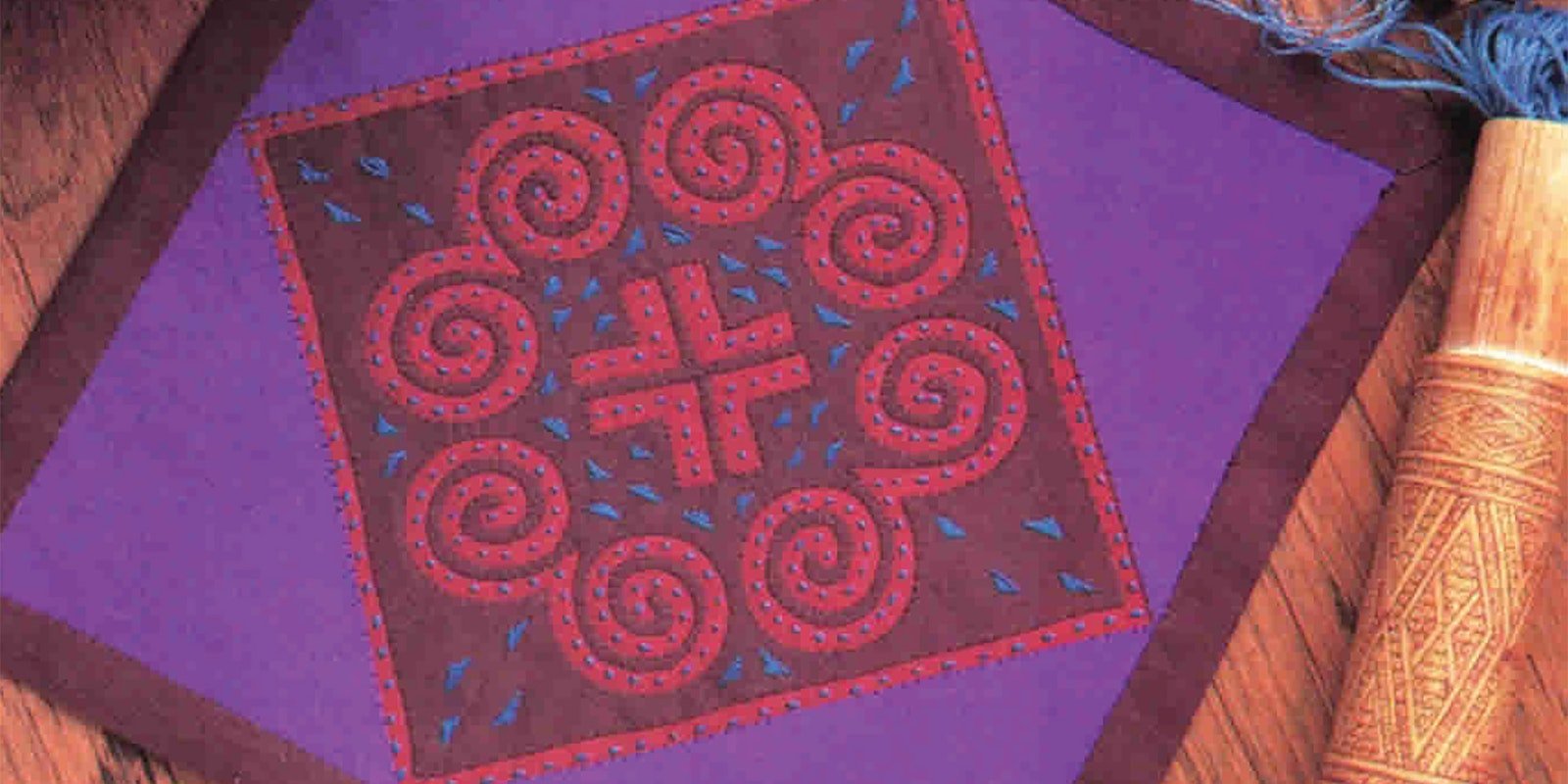Subscriber Exclusive
Cultural Fusion: An Applique Square to Quilt
Learn a new quilting technique and discover the cultural connection between Hmong and Amish needlework styles.
Learn a new quilting technique and discover the cultural connection between Hmong and Amish needlework styles. <a href="https://pieceworkmagazine.com/make-hmong-amish-reverse-applique-square/">Continue reading.</a>
https://pieceworkmagazine.com/cdn-cgi/image/format=auto/https://www.datocms-assets.com/75076/1751644623-hmong-header.jpg?auto=format&w=900
When people from diverse cultures meet, needlework traditions can be a common language that facilitates community and understanding. This appliqué square gives you the chance to create a quilted piece and explore the textile connections forged between the Amish and the Hmong in Pennsylvania. PieceWork magazine subscribers can log in and access this bonus subscriber-exclusive PDF instantly.
Trish Faubion explores this cultural connection in her article “The Amish & The Hmong: Two Cultures & One Quilt,” featured in the November/December 1993 issue of PieceWork.
SUBSCRIBER EXCLUSIVE
When people from diverse cultures meet, needlework traditions can be a common language that facilitates community and understanding. This appliqué square gives you the chance to create a quilted piece and explore the textile connections forged between the Amish and the Hmong in Pennsylvania. PieceWork magazine subscribers can log in and access this bonus subscriber-exclusive PDF instantly.
Trish Faubion explores this cultural connection in her article “The Amish & The Hmong: Two Cultures & One Quilt,” featured in the November/December 1993 issue of PieceWork.
[PAYWALL]
Trish explains, “The Amish. The Hmong. At first glance, they seem like two very different cultures, but they have some strikingly similar characteristics: both are agrarian cultures; both are fiercely independent; both have deliberately remained separate from the outside world; both stress family and community as social structure; and both immigrated to the United States seeking asylum—the Amish from religious persecution, the Hmong from political reprisal. Both the Amish and the Hmong have strong needlework traditions.”

Make a Hmong-Amish reverse-appliqué square, designed by Suzanne De Atley and Chue Lao and featured in the November/December 1993 issue of PieceWork.
In the companion project to Trish’s article, “A Hmong-Amish Reverse-Appliqué Square to Make,” designers Suzanne De Atley and Chue Lao describe the details of their reverse-appliqué square, which was based on the needlework traditions of both peoples:
“Traditionally, the basic construction of a reverse-appliqué piece calls for three layers of fabric: a foundation layer (invisible), a background layer (here, red), and an overlay layer (here, brown) that is cut and its edges stitched under to reveal the background color as the design. The work may be embellished further—as this one is—by additional appliqué and by embroidery stitches. In our project, the purple triangles are appliquéd on after the central diamond of reverse appliqué is complete, and a fourth layer of finishing fabric covers the back of the piece (hiding all the stitching) and is brought to the front as a brown border. The finished piece measures 8 by 8 inches [20.3 by 20.3 cm].
“Although reverse appliquéing is not difficult, it's a good idea to practice cutting patterns on paper first and then practice turning under edges, keeping an even channel open, and making precise and evenly spaced appliqué stitches on fabric scraps. Creating Pa Ndau Appliqué, by Carla J. Hassel [Wallace-Homestead Book Co, 1984] is a useful reference that contains additional designs. The fabric colors and the Center Diamond design provide the Amish elements.”
“A Hmong-Amish Reverse-Appliqué Square to Make” PDF Download
Download PDF
To read more about the needlework traditions of the Amish and Hmong peoples and make the reverse-appliqué square, visit the library for the November/December 1993 issue of PieceWork.
Also, remember that if you are an active subscriber to PieceWork magazine, you have unlimited access to previous issues, including November/December 1993. See our help center for the step-by-step process on how to access them.
Elizabeth Prose is a former assistant editor of PieceWork.
Originally published April 4, 2018; updated July 7, 2025.


